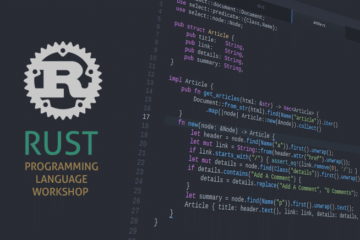Foreword
The following is a tutorial for creating PHP scripted daemons. All examples will be performed on CentOS linux. The daemon code itself will be written in PHP with a BASH script wrapper.
Getting Started
So to get started, let’s create a simple PHP file that will be executed as our daemon. Essentially, we’re going to create your everyday run of the mill command line PHP file. Then we’ll worry about turning into a daemon a little later. For this example, let’s create a simple PHP script that put’s text into a log file every second. So let’s create a file called “Daemon.php” and let’s put the following in it:
#!/usr/bin/php
<?php
while(true){
file_put_contents('/var/log/Daemon.log', 'Running...', FILE_APPEND);
sleep(1);
}//end while
?>
Executing The Daemon
Ok, that wasn’t so bad. The first line tells the interpreter what to execute the file against, in this case we want the file to be interpreted as PHP. Next we create a simple infinite loop that writes “Running…” to the /var/log/Daemon.log file, then sleeps for a second. Now let’s test it, but first we need to make it executable.
chmod a+x Daemon.php
Now let’s test it.
./Daemon.php
Now that the script is running let’s check the log file. Open a new terminal and issue the following command to verify the output.
tail -f /var/log/Daemon.log
If all has gone well you should see live updates that read “Running…Running…Running…”.
Enhancing The Script
Now, let’s enhance the script a little to make it more user friendly. Let’s add the ability to pass in command line arguments and display a help message.
#!/usr/bin/php
<?php
$log = '/var/log/Daemon.log';
/**
* Method for displaying the help and default variables.
**/
function displayUsage(){
global $log;
echo "n";
echo "Process for demonstrating a PHP daemon.n";
echo "n";
echo "Usage:n";
echo "tDaemon.php [options]n";
echo "n";
echo "toptions:n";
echo "tt--help display this help messagen";
echo "tt--log=<filename> The location of the log file (default '$log')n";
echo "n";
}//end displayUsage()
//configure command line arguments
if($argc > 0){
foreach($argv as $arg){
$args = explode('=',$arg);
switch($args[0]){
case '--help':
return displayUsage();
case '--log':
$log = $args[1];
break;
}//end switch
}//end foreach
}//end if
//the main process
while(true){
file_put_contents($log, 'Running...', FILE_APPEND);
sleep(1);
}//end while
?>
So now we have an elegant way to pass in command line arguments or options to our daemon process along with a nice display usage function which you can use to brand your process with author info, etc. Now that’s all fine and dandy, but what does that have to do with creating a PHP daemon? Hold on, we’re getting to that. Passing in command line flags easily and elegantly will come in hand once we get our daemon up and running. So now that we have a basic daemon process, let’s actually get it working as a daemon. To do this we’re going to need a BASH daemon launcher, and we’ll eventually need to put it in the “/etc/init.d” directory. So now the BASH daemon controller.
BASH Daemon Controller
Let’s start by creating a file called “Daemon” which we’ll use to control our Daemon.php file. So first I’ll give you the entire BASH script, then I’ll explain it.
#!/bin/bash
#
# /etc/init.d/Daemon
#
# Starts the at daemon
#
# chkconfig: 345 95 5
# description: Runs the demonstration daemon.
# processname: Daemon
# Source function library.
. /etc/init.d/functions
#startup values
log=/var/log/Daemon.log
#verify that the executable exists
test -x /home/godlikemouse/Daemon.php || exit 0RETVAL=0
#
# Set prog, proc and bin variables.
#
prog="Daemon"
proc=/var/lock/subsys/Daemon
bin=/home/godlikemouse/Daemon.php
start() {
# Check if Daemon is already running
if [ ! -f $proc ]; then
echo -n $"Starting $prog: "
daemon $bin --log=$log
RETVAL=$?
[ $RETVAL -eq 0 ] && touch $proc
echo
fi
return $RETVAL
}
stop() {
echo -n $"Stopping $prog: "
killproc $bin
RETVAL=$?
[ $RETVAL -eq 0 ] && rm -f $proc
echo
return $RETVAL
}
restart() {
stop
start
}
reload() {
restart
}
status_at() {
status $bin
}
case "$1" in
start)
start
;;
stop)
stop
;;
reload|restart)
restart
;;
condrestart)
if [ -f $proc ]; then
restart
fi
;;
status)
status_at
;;
*)
echo $"Usage: $0 {start|stop|restart|condrestart|status}"
exit 1
esac
exit $?
exit $RETVAL
Ok, so the above BASH script is the daemon controller responsible for starting, stopping, restarting, etc. Initially it sets itself up for use with chkconfig so that it can be set to start when the OS boots, etc. Next it includes the basic BASH functions include file. Afterward we check to see if the executable file actually exists before we try and start it. Next, we set up the default variables for our program including the proc filename, bin or executable and the program name. Next, we define some basic default parameters to pass to the PHP file when starting up. You could also modify this script to read variables from an /etc/Daemon configuration file, but for now we’ll just set them directly in the BASH file. Lastly the PHP file is invoked along with the daemon command. The rest of the file simple reads the users input to the BASH file and handles start, restart, etc. Next, let’s make the BASH Daemon file executable so we can use it in just a bit.
chmod a+x Daemon
PHP Daemon
So now that we have our controller, we’ll need to modify our PHP script to work in a daemon process. To have our PHP working in a daemon process we’ll need to use fork, that way we can establish a child process which will continually run and return a value to our controller to let it know that we were able to start properly. Here’s the modification to the PHP file.
#!/usr/bin/php
<?php
$log = '/var/log/Daemon.log';
/**
* Method for displaying the help and default variables.
**/
function displayUsage(){
global $log;
echo "n";
echo "Process for demonstrating a PHP daemon.n";
echo "n";
echo "Usage:n";
echo "tDaemon.php [options]n";
echo "n";
echo "toptions:n";
echo "tt--help display this help messagen";
echo "tt--log=<filename> The location of the log file (default '$log')n";
echo "n";
}//end displayUsage()
//configure command line arguments
if($argc > 0){
foreach($argv as $arg){
$args = explode('=',$arg);
switch($args[0]){
case '--help':
return displayUsage();
case '--log':
$log = $args[1];
break;
}//end switch
}//end foreach
}//end if
//fork the process to work in a daemonized environment
file_put_contents($log, "Status: starting up.n", FILE_APPEND);
$pid = pcntl_fork();
if($pid == -1){
file_put_contents($log, "Error: could not daemonize process.n", FILE_APPEND);
return 1; //error
}
else if($pid){
return 0; //success
}
else{
//the main process
while(true){
file_put_contents($log, 'Running...', FILE_APPEND);
sleep(1);
}//end while
}//end if
?>
You’ll notice that I’ve added a few more calls to file_put_contents() just to let us know how we’re doing. Now for the guts of the operation, we call pcntl_fork() to generate a child process and to let the parent caller return a value back to the BASH daemon controller. The first if determines if the fork call worked at all, if it returns a -1, then it’s a failure, report the error and return a failed status back to the BASH daemon controller. If $pid contains a valid number, then we’re good to go, but we’re still in the parent process, so we return 0 to let the BASH daemon controller know that all is well in the universe. The else executes when the child process is created, and this is where the main part of our program executes.
Now, if all has gone well we should be able to start the daemon in normal daemon fashion. If you’re running this in your /home/{username} directory then execute the following:
./Daemon start
You can also copy the Daemon BASH script to the /etc/init.d/ directory, in which case you can start the daemon using the “service” command:
service Daemon start
Stopping Daemon: [ OK ]
Now to verify that everything is working correctly. First let’s check the log file:
tail -f /var/log/Daemon.log
Status: starting up.
Running…Running…Running…
Yep, all good there. Now let’s check our process.
ps ax | grep Daemon
14886 pts/0 S 0:00 /usr/bin/php /home/godlikemouse/Daemon.php –log=/var/log/Daemon.log
14944 pts/2 R+ 0:00 grep Daemon
Ok, the process is running correctly. Now, let’s stop it and verify again. Issue the following command:
./Daemon stop
or if you copied the controller to the /etc/init.d directory
service Daemon stop
Stopping Daemon: [ OK ]
Now let’s verify that our process has stopped:
ps ax | grep Daemon
14997 pts/2 R+ 0:00 grep Daemon
Yep, all good…and there you have it. Now you can write PHP daemons until you turn blue and pass out. Hopefully this tutorial has been helpful, good luck.
The files used in this tutorial are available for download and use:


0 Comments